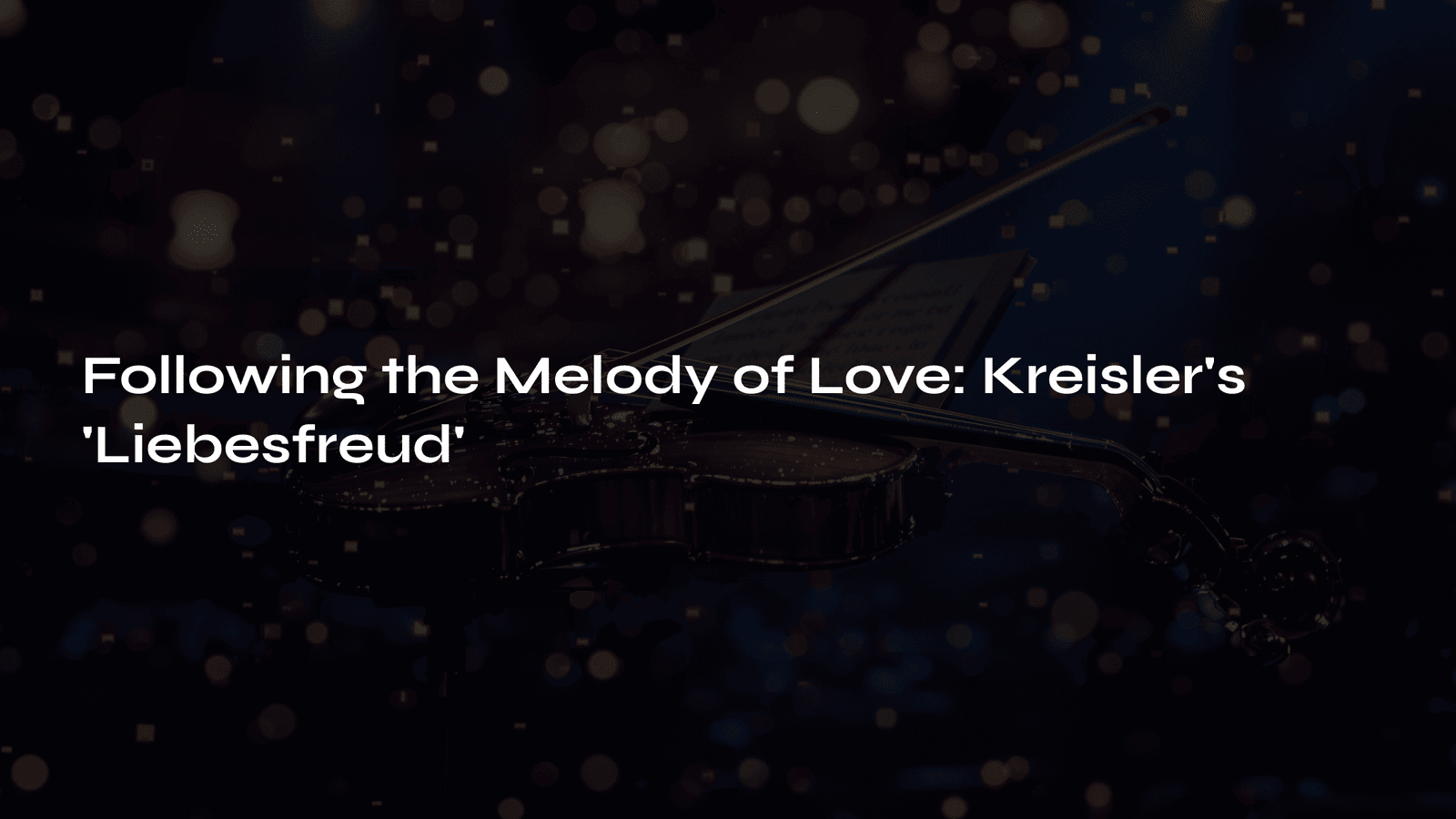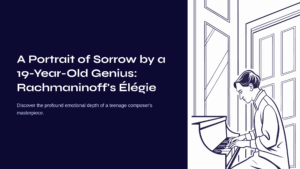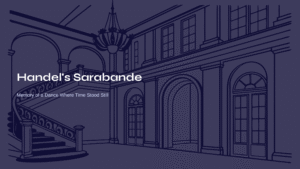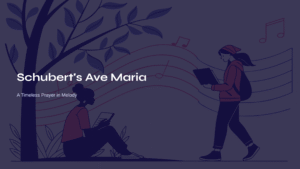Table of Contents
I still vividly remember that moment when the violin’s lively melody lingered in my ears. Sitting in the middle of the concert hall with my eyes closed, the “joy of love” drawn by the violin bow approached me comfortably like an old friend. Kreisler’s ‘Liebesfreud,’ which I first encountered then, has since become a precious companion in my life.
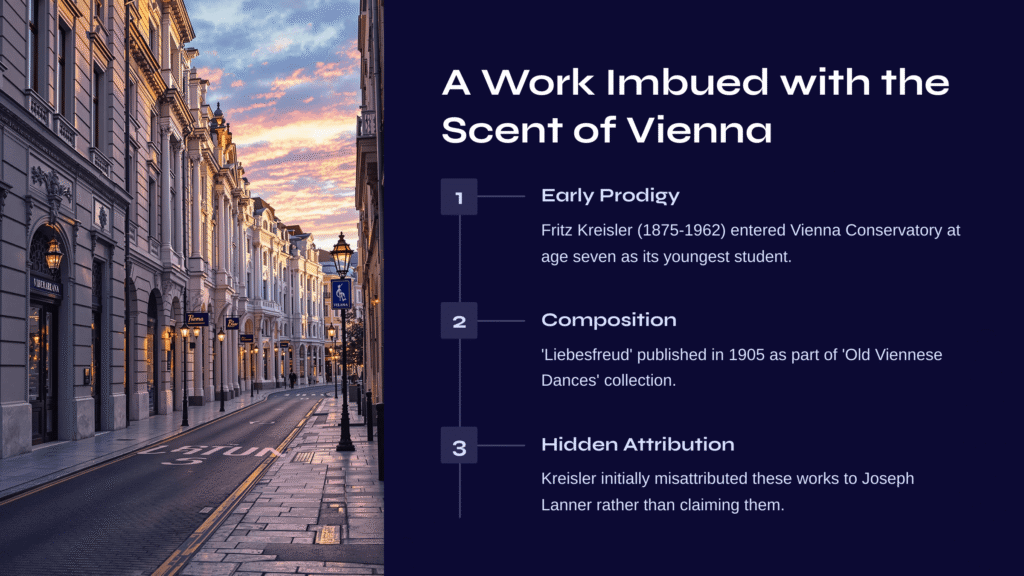
A Work Imbued with the Scent of Vienna
Fritz Kreisler (1875-1962) was hailed as the “King of Violinists” and revered as the greatest violinist of the early 20th century. Born in Vienna, Austria, to a physician father, he showed remarkable musical talent from a young age and remarkably entered the Vienna Conservatory at the age of seven as its youngest student.
‘Liebesfreud’ (Love’s Joy) is the first piece in Kreisler’s collection ‘Old Viennese Dances’ (Alt-Wiener Tanzweisen), published in 1905. This collection also includes ‘Liebesleid’ (Love’s Sorrow) and ‘Schön Rosmarin’ (Beautiful Rosemary). Interestingly, Kreisler initially deliberately misattributed these works to Joseph Lanner rather than claiming them as his own compositions.
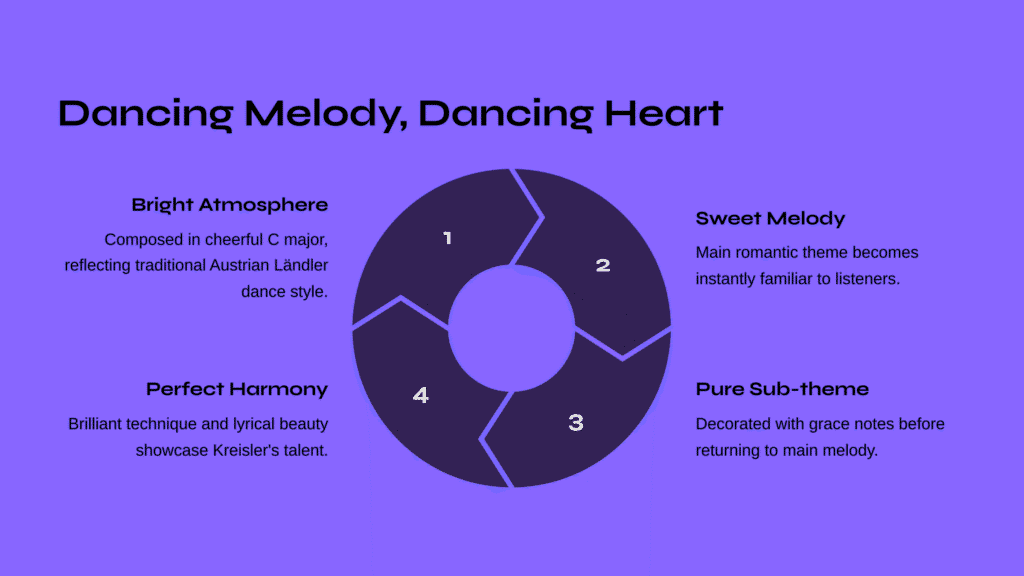
Dancing Melody, Dancing Heart
As its title “Love’s Joy” suggests, ‘Liebesfreud’ offers a bright and lively atmosphere. Composed in the cheerful key of C major, this piece reflects the style of the Ländler, a traditional Austrian dance, in a short rondo form.
It follows a ternary form where a sweet and romantic main melody is followed by a pure sub-theme decorated with grace notes, and then the main melody repeats. The melody, which expresses the joy of love through lively ornaments and staccato, has the charm of becoming familiar as soon as you hear it.
This work, where the violin’s brilliant technique and lyrical beauty harmonize perfectly, can be considered the result of Kreisler’s concentrated experience as a performer and talent as a composer.
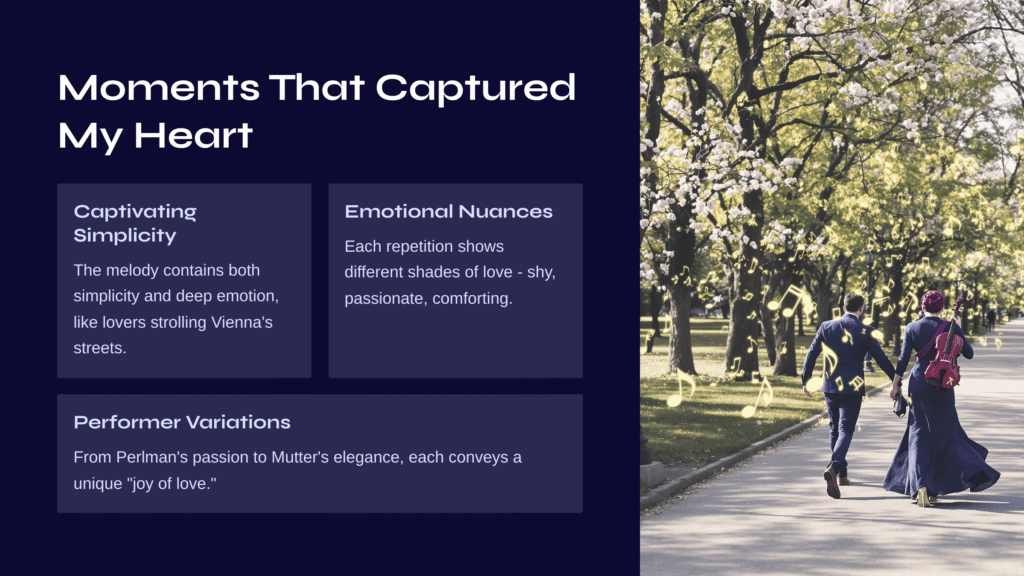
Moments That Captured My Heart
When I first encountered this piece, I was immediately captivated by its melody that contained both simplicity and deep emotion. The joy and delight depicted by the violin reminded me of lovers strolling the streets of Vienna on a bright spring afternoon.
Especially, the nuances that change slightly each time the main melody repeats seemed to express the various shades of the emotion called love. Sometimes shy, sometimes passionate, sometimes comforting, the melody seemed to show the different stages of love.
Another appealing aspect is how the mood of this piece can vary greatly depending on the performer. From Itzhak Perlman’s brilliant and passionate performance to Anne-Sophie Mutter’s elegant and sophisticated interpretation, it’s the same piece but each conveys a different “joy of love.”
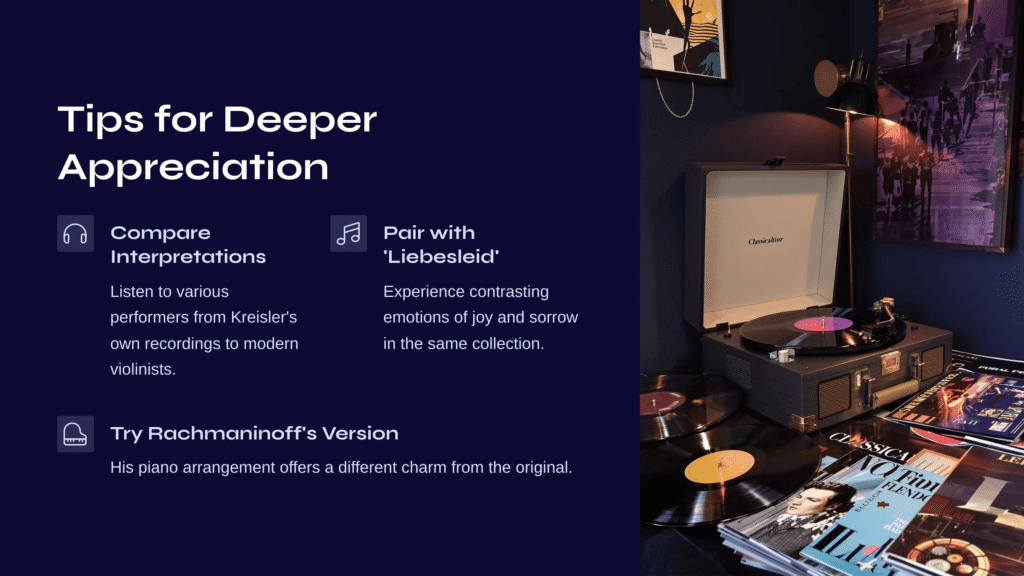
Tips for Deeper Appreciation
If you want to appreciate ‘Liebesfreud’ more deeply, here are a few points to note.
First, try comparing the interpretations of various performers. From Kreisler’s own recordings to performances by modern violinists, discovering the differences in interpretation according to era and performer provides a different pleasure of appreciation.
Second, listen to it along with ‘Liebesleid’ (Love’s Sorrow), which is included in the same collection. Listening to these two pieces expressing contrasting emotions of joy and sorrow consecutively allows you to understand Kreisler’s delicate ability to express emotions more deeply.
Third, don’t miss the piano version arranged by Rachmaninoff. Rachmaninoff’s arrangement, which reinterprets the violin melody for piano, has a charm different from the original.
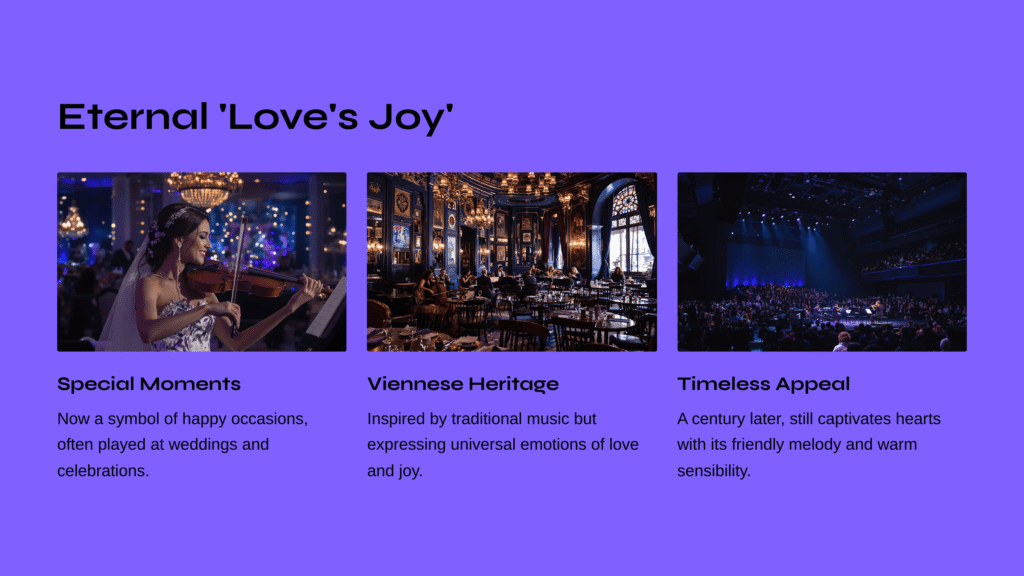
Eternal ‘Love’s Joy’
More than a century has passed, but Kreisler’s ‘Liebesfreud’ still captivates the hearts of many. The friendly melody and warm sensibility that even those unfamiliar with classical music can easily approach are the secrets behind this piece’s enduring popularity.
This piece, often used as background music for weddings or special events, has now become a symbol of happy and special moments, just like its title “Love’s Joy.”
This small piece, inspired by Vienna’s traditional music, comes to us today as an expression of the universal emotions of love and joy beyond simple music. The melody of ‘Liebesfreud,’ which comforts our hearts and brings joy transcending time and space, will continue to be with us for a long time to come.
If you enjoyed the elegant charm of Kreisler’s ‘Liebesfreud,’ you might also appreciate the serene beauty of ‘A Melody Adorning the Silent Night, Cimarosa’s Oboe Concerto.’ Discover how this timeless piece creates a different kind of musical magic with its graceful melodies and atmospheric depth.
A Melody Adorning the Silent Night, Cimarosa’s Oboe Concerto – ReViewMaster DEN
